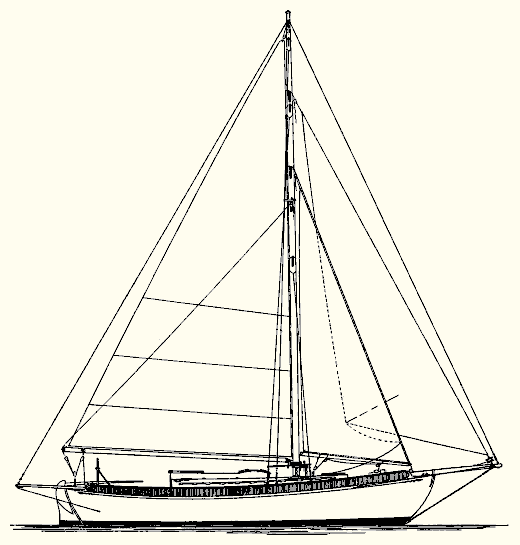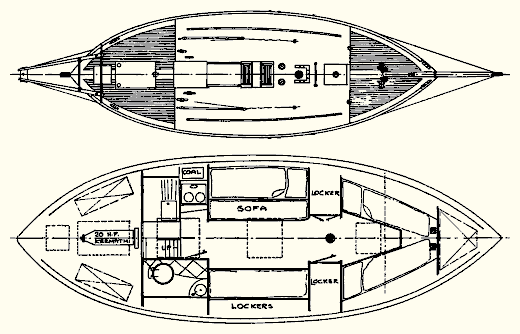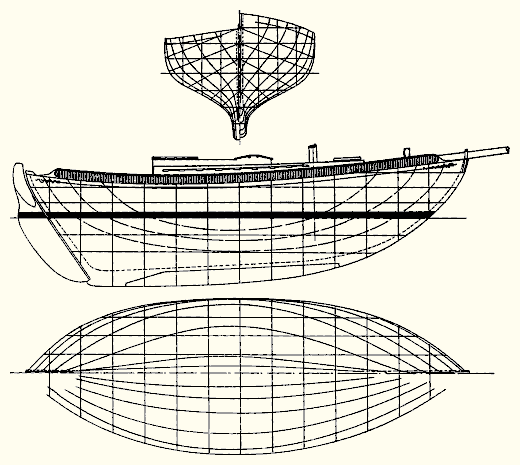


Thistle is a wholesome little ship. It will be difficult to find a more seaworthy model. She has behind her a heritage that cannot be matched. Long hundreds, aye, thousands, of years ago intrepid seamen cruised the heaving Atlantic in double-end ships of somewhat similar character. Leif the Lucky, Eric the Red - sea kings of the countries lying east of the North Sea -- sailed their fast and able Long Serpents and Dragons beyond the rim of the horizon. Quite beyond, and landed them upon the shore of Greenland, Labrador, and even our own New England coast.

Thistle is 32 feet 1 inch in over all length, has a water line length of 27 feet 6 inches, a breadth of 11 feet, and a draft of 5 feet. She has generous freeboard but not so much as to appear badly or to present excessive windage, the latter being a grave fault with many small auxiliaries. She has a flush deck with a handy well forward for working anchors and gear. The headroom under the slide and skylight is over six feet and under the deck beams 5 feet 7 inches.
She is rigged as a cutter with jib-headed mainsail, staysail, and jib; a jib-topsail might be carried to advantage in light weather but is not absolutely required. The mainsail spreads 354.3 square feet; the staysail, 104 square feet; and the jib, 161.5 square feet. This brings the total sail area to 619.8 square feet. The mainsail is fitted with Turner rolling reefer, and the jib with Wykeham-Martin furling gear. Besides the usual more or less standardized standing rigging the rig is fitted with a permanent backstay led from a proper boomkin of a very practical design.

The cabin is laid out for the accommodation of four. This is the maximum complement for a yacht of this length and purpose. There are certain advantages in the plan as shown. The galley being aft, and the toilet room as well, wet weather is not likely to dribble down on the berths and living quarters; and since the berths are located at the widest point of the hull we have a maximum amount of room between the berth fronts and for the berths themselves. There is far more room below here than the plans convey.

Since all motors are perfectly reliable the choice of power is largely one of preference. But remember in this connection that anything over 30 h.p. is excessive; by the same token do not install a motor of less than 10 h.p. The latter will provide speeds up to 5 1/2 miles an hour; the former up to 7 1/2 miles.